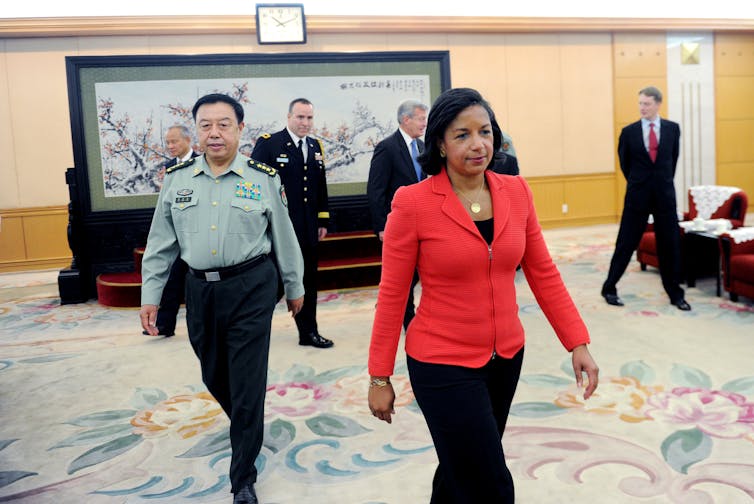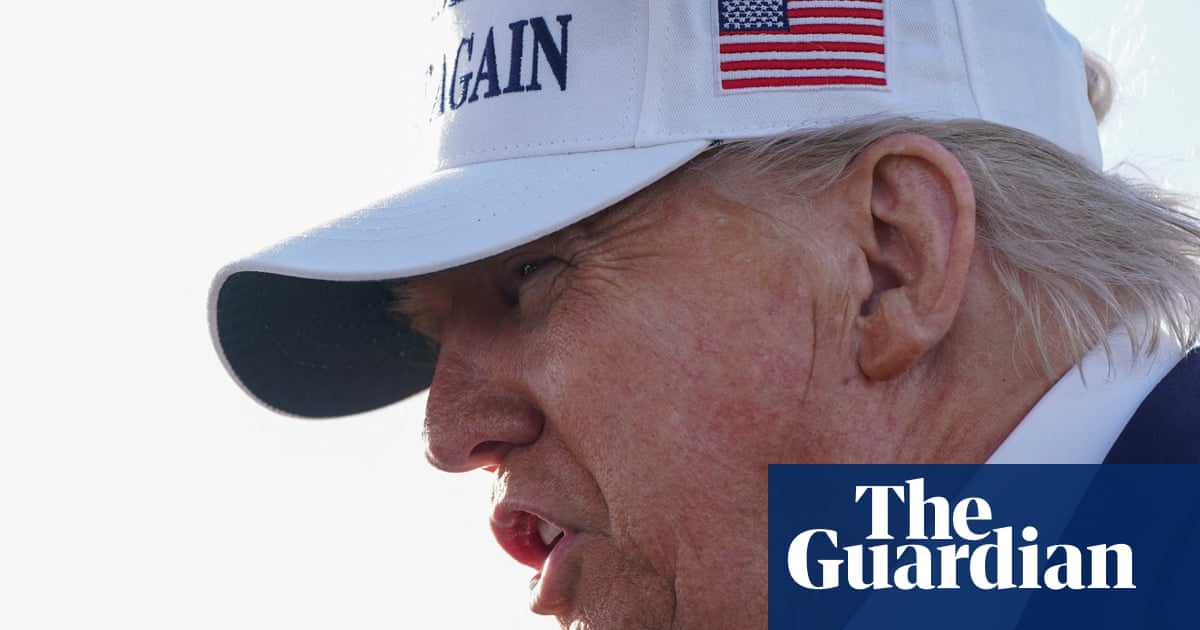The removal of Mike Waltz as President Donald Trump’s national security adviser – formally the assistant to the president for national security affairs – raises the question of just what that position entails and also what it means that Marco Rubio will now act as secretary of state and national security adviser.
The National Security Act of 1947 created the National Security Council to advise the president on matters of national security. It’s also tasked with integrating domestic, foreign and military policies.
But the national security adviser position is neither enshrined in law nor accountable to Congress.
I’m an economist and international relations scholar who has worked with three national security advisers − Zbigniew Brzezinski, Samuel “Sandy” Berger and Susan Rice.
I’ve seen the job up close. The core of the national security adviser’s role is managing the national security decision-making process, as decisions on issues from Ukraine to Gaza to nuclear proliferation are made. It’s a coordinating role.
Honest broker
National security advisers set the timing and flow of policy analysis and recommendations to the National Security Council committees − first, the principals committee, which brings together the Cabinet secretaries with national security responsibilities from the State Department, Department of Defense, the CIA and others.
While the principals committee typically rarely meets and virtually never with the president in the chair, not so the deputies committee. That committee brings together the Nos. 2 and 3 in the same departments.
In my most recent stint in Washington as chair of the National Intelligence Council in the Obama administration, the deputies committee met almost every day, sometimes more than once. Its formal role is to tee up issues for decision by the principals and the president.
National security advisers have the advantage of proximity to the president, with an office footsteps from the Oval, as it is known in Washington lingo. They also manage a relatively lean staff.
In my time on the National Security Council staff in the Carter administration, it was perhaps 150 all told, including the watch officers in the White House Situation Room. In the Biden administration it was on the order of 350 staff.
For us National Security Council staffers, if we disagreed with our counterparts at the State Department or the Defense Department, we could let the principals decide. We knew that we could get to Brzezinski faster, for example, than they could get to their Cabinet secretaries.

In Washington, proximity is opportunity. And, not surprisingly, national security advisers since McGeorge Bundy in the John F. Kennedy and Lyndon B. Johnson administrations have become central figures in the foreign policy arena. The have had to manage the balance between seeking to influence the president and remaining an honest broker.
As Berger put it, “You have to be perceived by your colleagues as an honest representative of their viewpoint, or the system breaks down.”
Managing the tension
National security advisers have managed the tension in their roles in different ways. And two models of those roles have emerged.
Henry Kissinger, who served Presidents Richard Nixon and Gerald Ford, was a powerful strategist driving presidential policy, often bypassing traditional channels. He, like Secretary of State Marco Rubio will do, served a dual role from 1973 to 1975 as national security adviser and secretary of state. Condoleezza Rice, the national security adviser who served George W. Bush, also later became secretary of state.
Brent Scowcroft, who served both Ford and President George H. W. Bush, is the exemplar of the other model − an “honest broker” ensuring a fair, collegial policy process. He was the consummate insider: low-key, meticulous about process and influencing through quiet proximity. The Bush administration he served was also, as described by a friend, as collegial as the men’s locker room of an upscale country club. Still, while I never had the chance to work with him, he is my standard for the role of national security adviser.
Waltz served too briefly to evaluate his record. It’s ironic that what seems to have done him in was the Signalgate scandal, in which Waltz added a journalist to a Signal group chat in which government officials discussed details about a planned U.S. military strike in Yemen.
That was an example of Waltz’s coordinating role, bringing most of the relevant policy officials together to discuss an important issue. The purpose was right, but the means was extremely unwise.

Learning from the past
Historically, the worst crisis of the National Security Council system ensued when it sought to conduct operations, not just organize them. That was the case in the Iran-Contra affair of the Reagan administration.
Robert McFarlane took over as national security adviser in October 1983. A former Marine officer and deputy national security adviser, he was conscientious to a fault: In one meeting while he was consulting during the transition from President George H. W. Bush to President Bill Clinton, we asked him about work hours. He replied: “They’re not bad. I’m out of here by eight most nights, earlier on Sunday.”
He was done in by Iran-Contra, a clandestine effort run by the National Security Council to trade arms to Iran − then under a U.S. arms embargo − in hopes of freeing American hostages, with proceeds diverted to fund the Nicaraguan Contras, despite a congressional ban on funding them. He pleaded guilty in 1988 to withholding information from Congress.
It’s a telling lesson for Rubio and other Waltz successors as the national security adviser of the dangers of moving from honest broker and quiet advocate to operator − especially if the operation is contrary to public U.S. policy and perhaps against the law.
This story is part of a series of profiles of Cabinet and high-level administration positions.

 German (DE)
German (DE)  English (US)
English (US)  Spanish (ES)
Spanish (ES)  French (FR)
French (FR)  Hindi (IN)
Hindi (IN)  Italian (IT)
Italian (IT)  Russian (RU)
Russian (RU)  2 weeks ago
2 weeks ago
























Comments